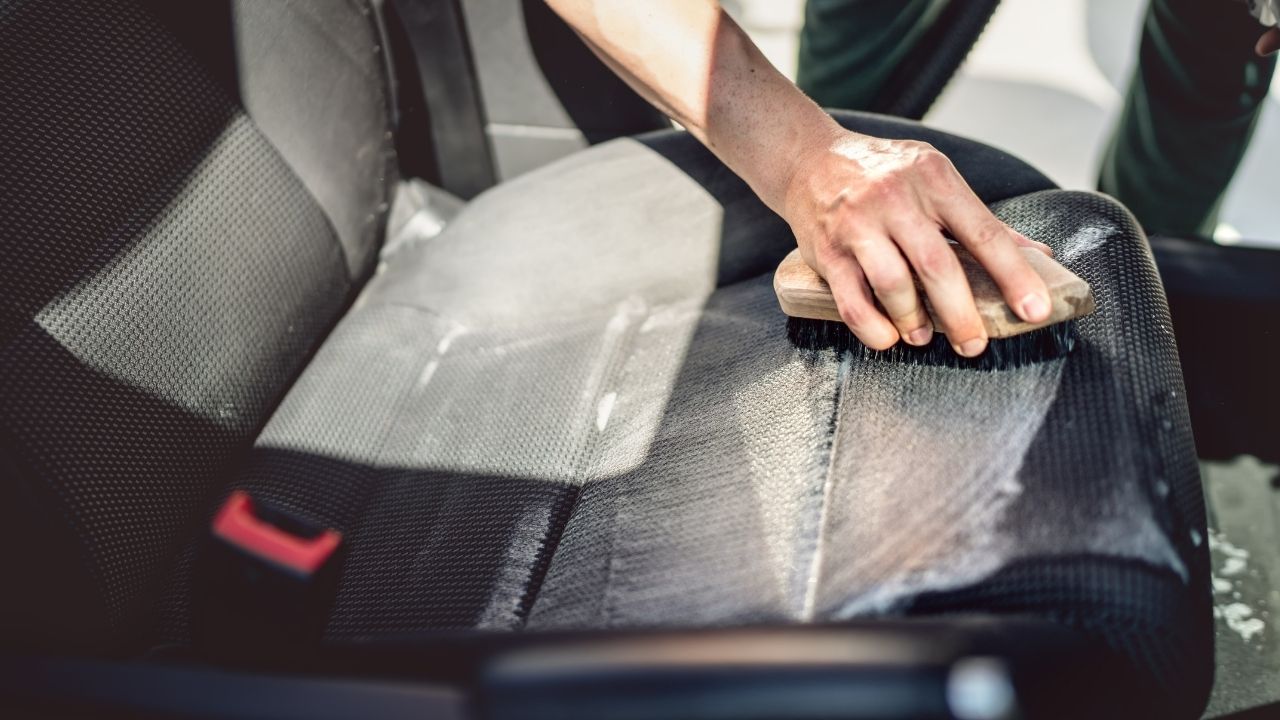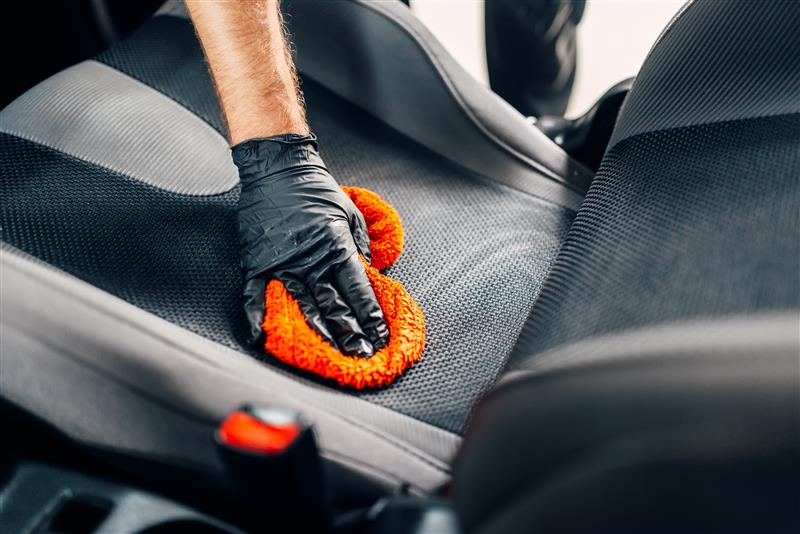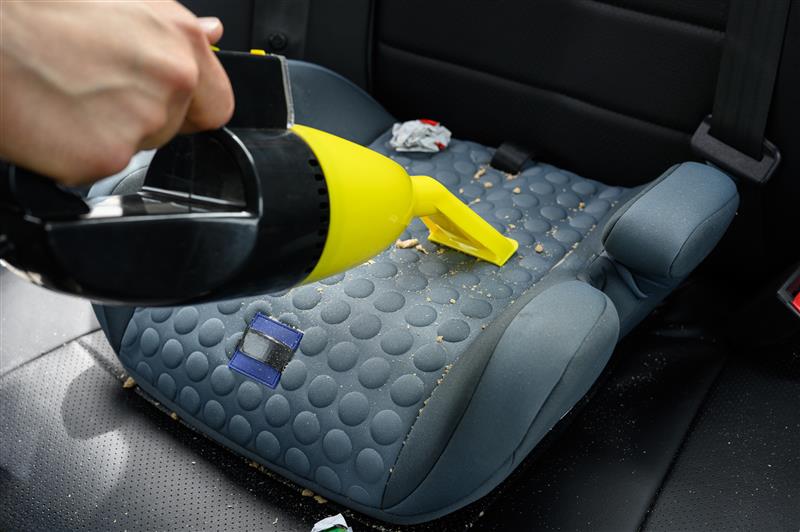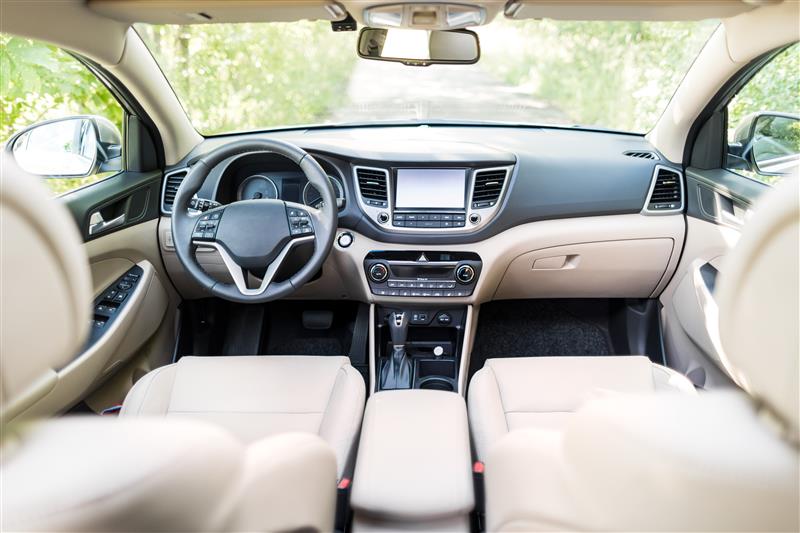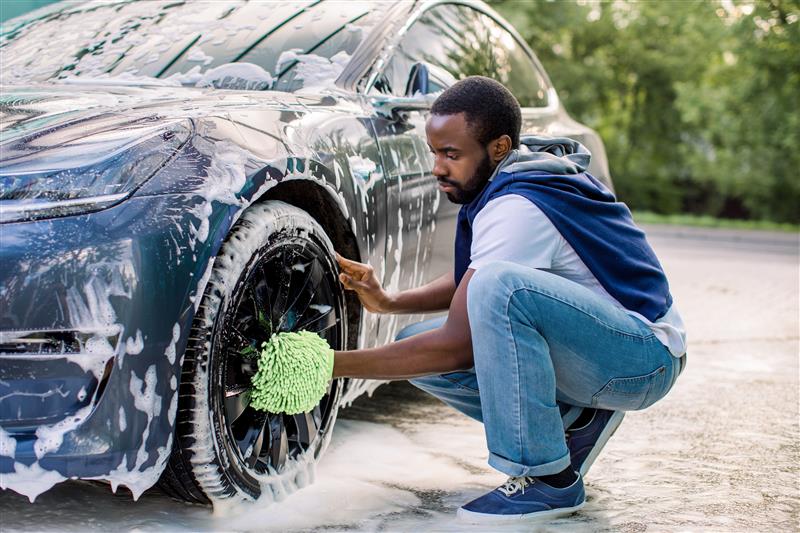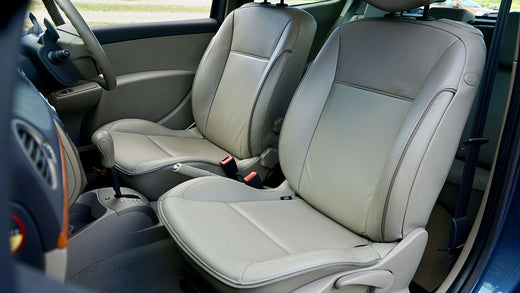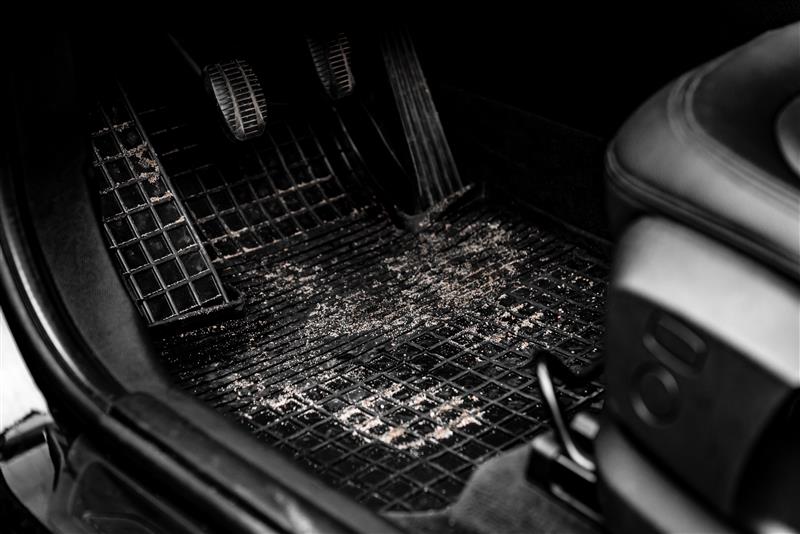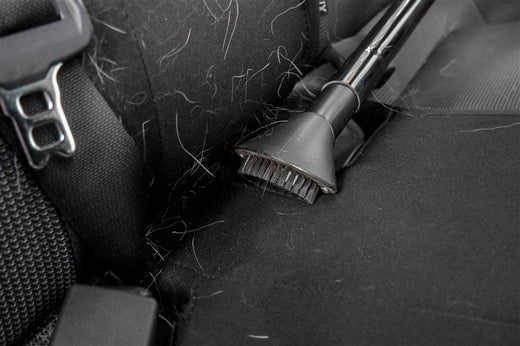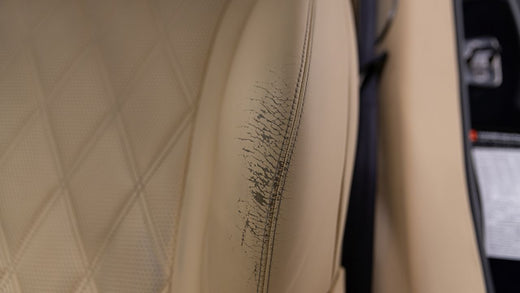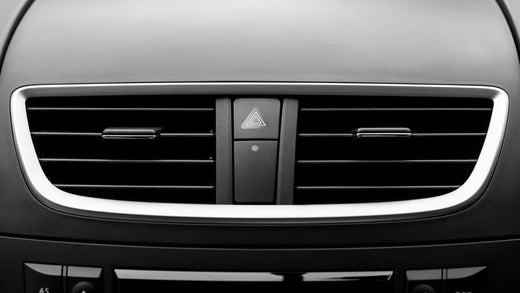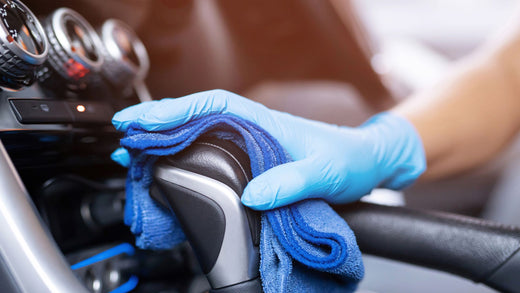Clear vision ahead with our holiday markdowns on Invisible Glass Ceramic Silicone Wiper Blades. Prices as marked.
Seats with cloth upholstery get dirty fast, and it’s no wonder. A study conducted by The Car Connection crunched the numbers and found that US drivers are in their vehicles for approximately 18 days out of each year. That’s a lot of time for dirt to build up! Today, we’ll showcase how to keep your cloth upholstery clean and share specific stain removal strategies. These techniques may be used with your vehicle’s cloth seating, side panels, and carpets.
For most common stains, follow these steps: clean the surface, conduct a spot-test of your cleaner, apply cleaner, deep clean with a brush, and dry.
Tools needed for routine cleaning include:
Vacuum
- Soft or medium bristle brush
- Microfiber cloths
- Upholstery cleaner
- (Optional) stain remover
Choosing a cleaner
There are many cloth upholstery cleaners on the market, so you shouldn’t have much trouble finding one to best suit your needs. Cleaners vary in pH level and in strength. The pH scale ranges from one to fourteen. The lower the pH level, the more acidic the solution. Conversely, the higher the level, the more basic, or alkaline, it is. Solutions that fall at or close to seven are considered neutral. Tougher stains or deep cleans will require more acidic solutions than basic, maintenance cleanings.
Upholstery cleaners are engineered to tackle a variety of debris, including insoluble and soluble soils. Insoluble soils are debris that cannot dissolve with the addition of water, including things that may be tracked in from the outside like sand, dust, or soil. In contrast, soluble soils will begin to dissolve if liquid is added. Examples of soluble soils include coffee, juice, or ink.
Different cleaners contain various enzymes. An enzyme is a type of protein found within a cell. Enzymes work as a biological catalyst, accelerating chemical reactions. In this case, cleaning enzymes work to separate stain/debris from the surface of your upholstery. The most common enzymes found in cleaning products include:
- protease - to break down proteins
- lipase - to break down lipids
- amylase - to break down starches
Regardless of its chemical makeup, we recommend that you select a cleaner with foaming action. A foam solution will sit on the surface of your upholstery rather than soaking immediately. This offers two benefits, including: giving the solution more time to take effect and decrease your post-cleaning drying time.
You will also want to avoid cleaners with added dyes or fragrances. These are unnecessary additions that only increase the risk of a negative chemical reaction with your cloth upholstery.
A product like Stoner Car Care’s Upholstery & Carpet Cleaner is an excellent product to use for standard upholstery cleaning. Its foaming action lifts stains yet leaves behind no sticky film or residue, making it a safe bet for detailers.
Generic care and cleaning
Did you know that most professional cleaners recommend cleaning your cloth seats every one-to-two weeks?
Your fabric areas get dirty fast, regardless of whether dirt or grime is visible. Routine cleaning can prolong the lifespan of your cloth upholstery – saving you money long-term. Let’s dive into the step-by-step process for generic cleaning of cloth upholstery.
Clean off the surface
Cloth upholstery is found on a variety of surfaces, such as floor mats, seats, carpeting, and headliners. If you have floor mats, remove them from the vehicle for easy cleaning. Your work in other areas may prove more difficult, as you’ll be detailing in a limited space. Target large debris by hand. Remove items such as food bags, spilled snacks, clumps of dirt, or children’s toys.
When dealing with fresh, liquid stains, blot the surface with a towel to remove as much liquid as possible. You may also use a shop-vacuum designed to handle liquids, if one is available. An older stain will typically have flakes of small stain particles lingering on the surface. Vacuum these particles up, if possible. Be gentle, and do not rub the tip of the vacuum into the upholstery, as it will deepen the stain and complicate the cleaning process.
Work the vacuum in the surrounding areas of the cloth upholstery. Cloth upholstery collects dust, hair, and other debris that get pushed deep into the padding over time. Focus on cracks and crevices as you work near seats – these areas are magnets for dirt build up and dust.
Conduct a spot-test
Perform a spot-test when using new chemicals for the first time. A spot-test is a small-scale test where product is applied to the material on which you’re working to see how it reacts. Perform your spot-test on an unnoticeable area of the vehicle, such as the bottom or side of a seat.
This step is not necessary if you are working with a tried-and-true cleaning product.
Apply upholstery cleaner
Plan to clean your vehicle’s cloth from top to bottom to prevent any dirty solution from dripping onto clean areas. Focus on one small area at a time, keeping track of the areas you’ve cleaned. For most stains, you will want to allow the cleaner to sit for the recommended time before gently blotting with a microfiber cloth. Specific stains require different cleaning methods. Click here to learn how to clean specific spills or stains.
As you work, remember to apply a conservative amount of cleaning fluid. Too much cleaner will seep into your upholstery and settle into the padding of your seats. This may worsen the stain or even cause new damage.
Deep clean with a brush
Your upholstery cleaner will do most of the work, lifting any stain to the surface; however, dirt and grime can hide deep within fibers of your fabric. A soft-bristled brush can sweep away stubborn soil.
Because hard bristles can damage any type of fabric with enough force, we recommend using a soft- or medium-bristle brush. These brushes will effectively remove nearly any stubborn stain.
With cleaner applied, agitate the area by brushing in your cleaning solution. Use a circular motion to massage the upholstery cleaner deeper into the material of your seats, allowing it to lift ground in dirt to the surface. Remember to work on one small area at a time before moving to the next.
Dry the area
As you finish cleaning, blot the fabric to remove leftover moisture. Excess cleaning solution that remains on the seat will soak in the upholstery, and that may create new problems. If you have one, a shop vac is excellent for soaking up any additional liquids.
If you don’t have a shop vac, we recommend thoroughly blotting with a microfiber towel. Microfiber towels are affordable, and house thousands of small fibers that are designed to be absorbent, gentle, and reusable.
After blotting, give the car time to dry before using the seats. This may take several hours or even overnight.
Want to speed up the drying process? There are several methods you can use to save time. Oscillating fans are great for drying off car interiors. You may also open doors or windows to help air circulate and reduce drying time. Finally, parking your car in a warm area will also speed up the drying process.
Addressing specific spills/stains
The aforementioned process will remove most common stains; however, stubborn stains may require extra time and consideration.
While some car owners use household items to clean stains, we recommend you rely on commercially produced products. Mostenbocker’s Lift Off© brand specializes in producing stain removers for various applications – such as food, drink, pet, grease, oil, ink, or marker stains. You can find their three-in-one value kit here.
Commercially produced products are generally more effective, safe, and user-friendly than household-made cleaning solutions. You can find the exact product for the stains you’re removing - and combine removers for complex stains. Science is behind you when you clean with professional products. Mostenbocker’s Lift Off provides an in-depth stain guide where you’ll find step-by-step instructions on how to tackle the stain you’re working with.
See the table, below, to learn how to tackle several stubborn, but common, auto upholstery stains. (Return Back)
Remember: Always perform a spot-test before applying any new product to your upholstery.
|
TYPE OF STAIN |
FRESH STAIN |
OLD STAIN |
|---|---|---|
| Coffee stains Many drivers drink their Joe on the go, making coffee spills common occurrences. |
Try to get to coffee stains immediately. When the coffee stain is fresh, rinse it with cold water to dilute it. Do not scrub the liquid in; instead, lightly blot it with a towel. Next, apply stain remover and follow directions for removal. |
Dried stains are harder to remove than fresh ones. To lift dried coffee stains, rely on several cleaning sessions with a strong cleaning product. |
| Juice, soda, and tea stains Juice, soda, and tea are likely to contain added colors and sugar, making for a sticky and noticeable mess. |
If the stain is fresh, apply cold water to dilute. Apply stain remover, then cool water, and blotting with a clean microfiber cloth to lift these stains. Repeat these steps as necessary to remove most juice, soda, and tea stains. |
To tackle an older juice, soda, or tea stain, use hot, rather than cold water to dilute the stain. Next, apply cleaner and blot with a clean microfiber to lift the stain. Repeat as necessary to break down the old stain. |
| Condiments – ketchup, BBQ sauce, and others Condiments can be a real headache to clean, and they become more challenging to remove if left on the surface for any length of time. |
If you act quickly, you can likely blot away most of the spillage. Condiments like ketchup and BBQ sauce have a high viscosity – they move sluggishly and won’t soak into your material quickly. Never scrub condiments. This will spread and deepen the stain, making the cleaning process more difficult. After carefully blotting, follow the general cleaning process above (cleaner, soak, water, blot) to remove any remaining condiment stain. |
You may read that some automotive experts recommend applying small amounts of vinegar to lift older, set-in condiment stains; however, we recommend using only specifically engineered car products to address these tough stains. Older stains may require several treatments to lift. |
That’s it - you’re stain-savvy!
Outside of your home and office, the car is the place you are most likely to spend time. You owe it to yourself to keep things tidy. Follow these steps to keep your cloth upholstery clean: clean the surface, conduct a spot-test, apply your cleaner, deep clean with a brush, and dry the area. These steps - along with a reasonable amount of urgency - will help keep your cloth upholstery clean and stain-free for the long haul.

